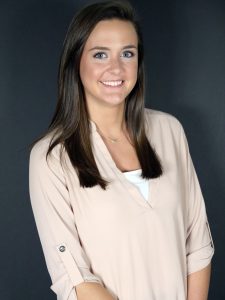At Sullivan Branding, we just wrapped up our summer intern program.
Asking around the office, it became apparent that most people in our field had completed at least one internship during their college career. Everyone’s internship is unique but most people walked away better equipped to enter the workforce.
Five decades of internships have given our colleagues a wealth of knowledge. And while some of that knowledge is a mainstay, some is now useless and outdated.
Here are some insightful tales from our staffers’ internship experiences:

Ralph Berry, our executive vice president of public relations, interned at channel 4 in Indianapolis in 1979.
“When I interned as a television reporter in the late 1970s, the hardest things to do were editing the film to account for the video to audio sound lag, and keeping up with news in a non-technology world. Film editing is now a lost art form in today’s digital newsroom. Our communications technology was a police scanner and a CB radio in the news car. We stopped at a pay phone to check in with the station as we got each news item “in the can.”
“Breaking news was reported on a pay phone. News releases came to the station in the mail, timed for arrival to match the coverage date. Or, PR professionals dropped by the station with a release and product sample or to pitch an idea in person. News got on air during the half hour scheduled blocks, so we never worried about being scooped with today’s online post. The “technology” lessons of my internship are useless today.
“The lessons in concise storytelling, both in the news report and the PR practitioner to the reporter, are still paramount. Plus, there is still no substitute for in person pitching from time to time.”

Brian Sullivan, our CEO and president, interned as a brand manager for an outdoor weatherproof line of electrical components in the mid 1980s
“While the product line may not have seemed exciting, it was a tremendous opportunity to get involved in every aspect of the brand. Innovation was not a high priority, but we worked on new packaging, package design, marketing materials, etc. and used competitive research as inspiration. So, we wanted to know what our competition was doing and how we could do it better.
“This meant we had to get out into the market, visit stores, see how the products were displayed, watch people interact with the display and talk to customers. This gave us both ideas for how to better present our products and knowledge to make display recommendations to the retailers. Advances in technology have surely made all of this easier, especially the packaging innovation and display design. All of which can likely be done from the comfort of your home or office.
“However, I still believe there is no substitute for getting out into the market, watching behaviors and talking to customers. You will be surprised by what you can learn, even today.”

Amy Sharp, our executive vice president of marketing and operations, interned at a small-town newspaper in the mid 1990s
“When I interned with a small local newspaper in the 1990s, my biggest challenge was always time. If the paper needed camera-ready art for an ad that was running, I either had to create it myself, then shoot it with a STAT camera (a behemoth piece of machinery I can’t even comprehend was in existence as long as it was) or have artwork sent out to get ‘Veloxes’ (camera-ready art on Kodak paper) made.
“All of this took DAYS! DAYS we never had! We were shipping things left and right. I laugh thinking about how slow the computer probably was at that time. Software that designers can’t live without now, like Adobe Photoshop and Illustrator, were in their infancy. InDesign didn’t even exist. A designer couldn’t simply email files anywhere. We were loading them on Zip or Jaz drives and that’s where the courier or mailing came in again. Deadlines are still an issue, of course, but there is so much more technology that can help these days. The one thing I believe that is still the same after all these years in advertising.
“The key tool a designer always needed was a brain. That’s where the ideas always start, whether they get executed on paper or a computer. A great designer always needs the ability to think and create.”

Ashley Bowles, our public relations senior account executive, interned in the communications office for a United States senator in 2003
“Interning in Washington, D.C. was a very cool experience. Part of my role interning in the communications office for a United States senator was helping distribute news releases. We faxed news releases to TV stations and newspapers in Tennessee, then called to confirm their receipt. For some national media, we walked over to the Senate Press Gallery—a central location for then 1,500 reporters—in the Capitol building to drop off the releases in person.
“This was pre-social media, but during the 24-hour news cycle of TV. Our regional offices in Tennessee faxed in cutout news clips from local newspapers every morning that I compiled into a daily packet along with national coverage. Seems so archaic looking back. Now, it’s all available online.
“Big lesson learned for me was that you can never assume a TV station picked up your pitch, so following up on behalf of your client gives you another opportunity to pitch the news. Tracking your client’s coverage—or competitors’ coverage—shows your value as a PR practitioner.”

Madison Lathum, our PR intern and rising college senior, interned at Sullivan Branding in 2017
“I’d never had a PR internship before. The only things I knew I would be doing for sure were communicating with media and writing. Not only did I get that this summer, but I learned so much more about what it truly means to be a PR practitioner. I was able to meet with clients, write press releases, compile media lists and editorial calendars, research clients, craft social media posts, pitch to media, and that’s just a start on some of the many things I did.
“Almost everything I did this summer involved writing and communicating. I relied heavily on my computer almost all day, researching, writing and sending emails. Another large component of PR now is social media. So many brands, practitioners and journalists rely on social media as a platform on which to communicate, whether that be with their public or as a direct message to someone regarding business. Smartphones are now much more prominent than landlines, and they are the perfect places to manage social media accounts.
“Though communication forms have changed, the need for good writing and messaging has remained consistent.”
To the present…
From the 1970s to 2010s, the communications industry has drastically changed. Knowing how to tell a story, facilitate research, be creative, measure results and write well remain important in our industry—and I have a sneaking suspicion they always will.



